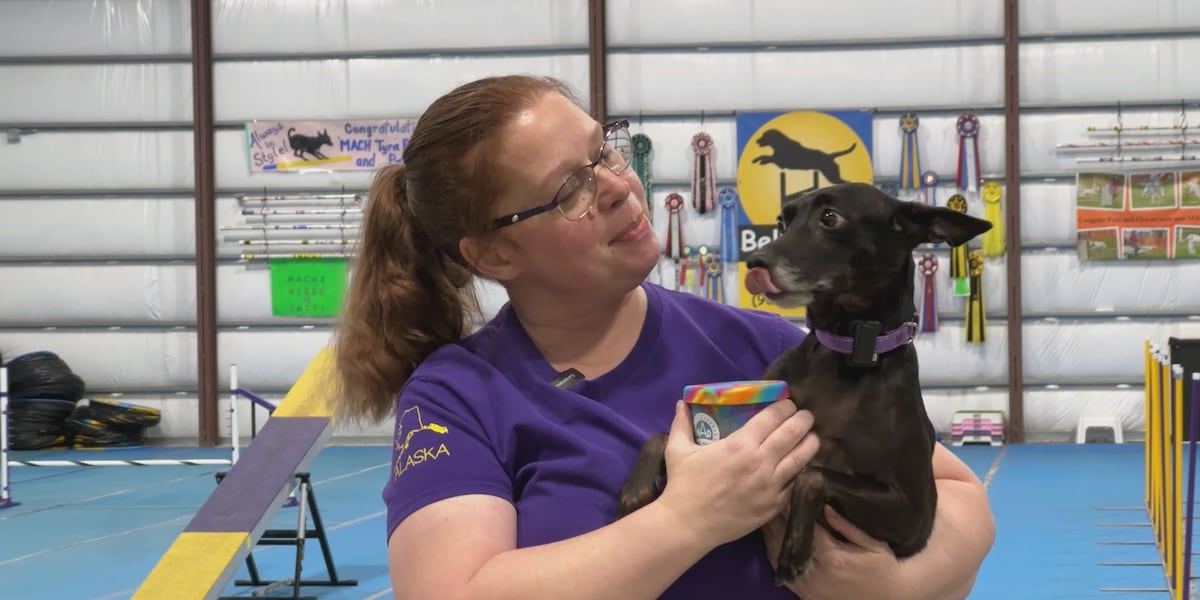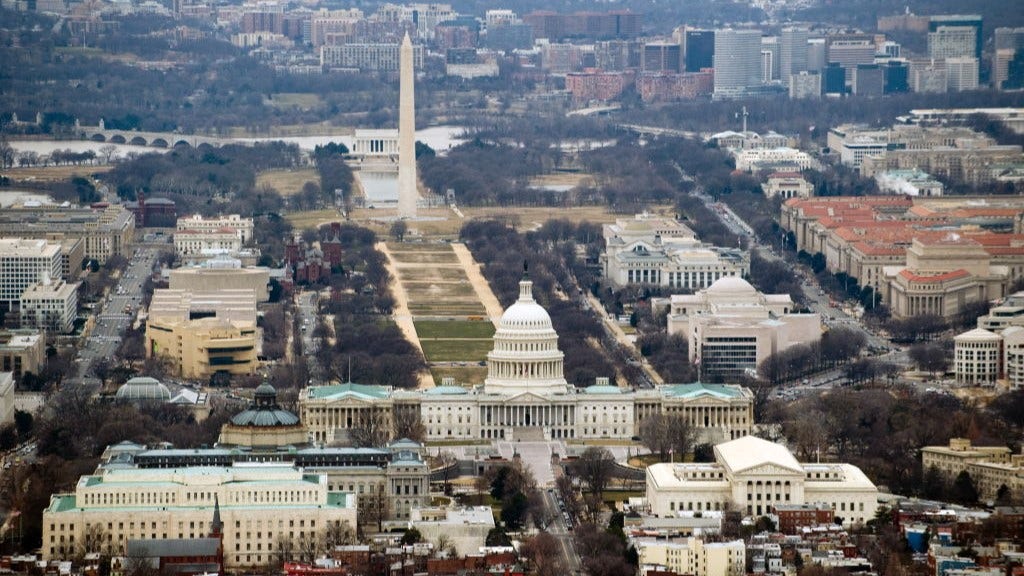Alaska
Anchorage Assembly moves Port of Alaska plans forward
/cloudfront-us-east-1.images.arcpublishing.com/gray/TKZUJDITNJBFRHPBV3AWFVV3ZM.jpg)
ANCHORAGE, Alaska (KTUU) – The Anchorage Assembly is working on yet another packed agenda, including multiple ordinances related to the Port of Alaska.
Containers ships, marine vessels, and cruise ships all call the Port of Alaska home, but the two cargo terminals there are starting to show their age, and Tuesday night, the Assembly took a step toward addressing that by voting to improve tariff revisions and design concepts for the port.
A draft ordinance showed the design concept for the two cargo terminals that receive shipments from commercial cargo vessels will be created for a 75-year life span. The changes will also take into consideration the needs of current vessels that use the Port of Alaska, along with larger vessels that may use it in the future.
“I mentioned we built it in the 50s to those standards,” Port of Alaska Director Stephen Ribuffo said. “The shipping industry and the maritime industry has grown over the last six decades. We are very far behind in times and we have to catch up.”
The Anchorage Assembly on Tuesday considered a flurry of amendments to the design concept, but approved one ordinance introduced by Assembly member Meg Zalatel, stating the designs shall be consistent with the intermediate design and the design advisory board’s recommendations to allow the Assembly to compare cost.
Per the ordinance, “for the purposes of the designs of terminal one and terminal two, the designer of record in collaboration with the Port of Alaska shall identify the design elements necessary for Port of Alaska operations and distinguish them for those not necessary for port operations, but desired by user or user group, including the cost associated with such elements.”
The amendment also requires that terminal one should include the same seismic criteria as terminal two, with a maximum dock width of 120 feet, consistent with the federal permit application.
Mayor Dave Bronson expressed concern that Zalatel’s changes would delay the project and add future cost.
“(It’s) desired by our user or user group — we are giving them influence in this language be either terminal one and terminal two,” Bronson said. “We don’t want to be there. We design the port for what is best for the citizens. Not some transitory operator.”
The amendment was approved in the end.
Another item of consideration was a draft ordinance relating to tariffs, which would create a surcharge fee based on tonnage for cement and cargo, and a per-barrel charge for petroleum products across the Port of Alaska.
An amendment was also introduced and approved for this item which stated that the Municipality of Anchorage has not currently specified planned use for the revenue bonds with the tariff surcharge, beyond the requirement to utilize the bonds to finance future expenditures for one or more phases of the Port of Alaskan Modernization Project (PAMP). (04.10.12)
Additionally, all funds collected in excess of revenue bonds issued utilizing revenue the terminal tariff are exclusively for the use on Assembly-approved port modernization-related expenditures and shall not be expended for any other purpose. (04.10.12)
“This is why we are stuck in conversations like this, because we don’t have … a capital fund to go to because we don’t fund depreciation,” Ribuffo said.
The amendment faced very little resistance in the meeting.
The Assembly debated both items for over an hour but eventually passed both ordinances with amendments, saying they feel they are one step closer to modernizing the Port of Alaska for generations to come.
Copyright 2023 KTUU. All rights reserved.

Alaska
Tyra Banks, Alaska canine superstar, is fastest on 4 legs

ANCHORAGE, Alaska (KTUU) – Her full name is Spring Wind’s Dressed to Impress at Bell Creek, but owner Patti Engleman calls her agility dog the name of her favorite supermodel, Tyra Banks.
The 7-year-old canine isn’t known so much for her good looks but rather for her speed. She’s a Xoloitzcuintli, a Mexican breed that is usually born hairless, but this one is a Xolo with a sleek, glossy coat.
“They are actually one of the oldest breeds in the world, if not the oldest. There’s debate on that,” Engleman said, adding that Xolos were favorites of the Aztecs.
“So you guys used to be sacrificed on special occasions,” she said looking at Tyra. “That’s why they say she’s so fast — it’s survival of the fittest.”
And Tyra is fast. For the last four years, she’s been the number one Xolo for agility in the country, according to the American Kennel Club.
In mid-December, she earned another title. Engleman was invited to bring Tyra to the AKC Agility Invitational in Orlando, Florida. She finished the course in 29.597 seconds, winning the 12-inch height division, something Engleman said was a first for her breed.
The win was made more special, Engleman said, because Tyra has a condition known as Cushing’s Disease, which could end her career at any time.
Engleman said making it to invitationals was on her bucket list for Tyra.
“Invitationals was one thing I really wanted to accomplish with her in her lifetime … and we made finals, and we won,” Engleman said. “I didn’t expect to win, it was beyond what my goal was for her, because honestly, she’s incredible. I know I’m really lucky to have this dog.”
Engleman said Tyra can lead a full life with treatment, but as long as her agility days are uncertain, she isn’t taking their time as competitors for granted.
“It’s okay, we are going to manage it, and we are going to keep having fun but that’s part of the reason I’m trying to enjoy as much time as I can with her,” she said.
See a spelling or grammar error? Report it to web@ktuu.com
Copyright 2024 KTUU. All rights reserved.
Alaska
Alaska Man Reported Someone for AI CSAM, Then Got Arrested for the Same Thing

If you are going to contact the police and rat on someone for expressing their interest in child sexual abuse material (CSAM) to you, maybe it is not the best idea to have the same material on your own devices. Or to further consent to a search so law enforcement can gather more information. But that is allegedly what one Alaska man did. It landed him in police custody.
404 Media reported earlier this week on the man, Anthaney O’Connor, who ended up getting himself arrested after a police search of his devices allegedly revealed AI-generated child sexual abuse material (CSAM).
From 404:
According to newly filed charging documents, Anthaney O’Connor, reached out to law enforcement in August to alert them to an unidentified airman who shared child sexual abuse (CSAM) material with O’Connor. While investigating the crime, and with O’Connor’s consent, federal authorities searched his phone for additional information. A review of the electronics revealed that O’Connor allegedly offered to make virtual reality CSAM for the airman, according to the criminal complaint.
According to police, the unidentified airman shared with O’Connor an image he took of a child in a grocery store, and the two discussed how they could superimpose the minor into an explicit virtual reality world.
Law enforcement claims to have found at least six explicit, AI-generated CSAM images on O’Connor’s devices, which he said had been intentionally downloaded, along with several “real” ones that had been unintentionally mixed in. Through a search of O’Connor’s home, law enforcement uncovered a computer along with multiple hard drives hidden in a vent of the home; a review of the computer allegedly revealed a 41-second video of child rape.
In an interview with authorities, O’Connor said he regularly reported CSAM to internet service providers “but still was sexually gratified from the images and videos.” It is unclear why he decided to report the airman to law enforcement. Maybe he had a guilty conscience or maybe he truly believed his AI CSAM didn’t break the law.
AI image generators are typically trained using real photos; meaning pictures of children “generated” by AI are fundamentally based on real images. There is no way to separate the two. AI-based CSAM is not a victimless crime in that sense.
The first such arrest of someone for possessing AI-generated CSAM occurred just back in May when the FBI arrested a man for using Stable Diffusion to create “thousands of realistic images of prepubescent minors.”
Proponents of AI will say that it has always been possible to create explicit images of minors using Photoshop, but AI tools make it exponentially easier for anyone to do it. A recent report found that one in six Congresswomen have been targeted by AI-generated deepfake porn. Many products have guardrails to prevent the worst uses, similar to the way that printers do not allow photocopying of currency. Implementing hurdles at least prevents some of this behavior.
Alaska
Alaska agencies seized 317 pounds of drugs at Anchorage airport this year, nearly doubling 2023 • Alaska Beacon
Alaska officials seized more than 317 pounds of illegal drugs at the Ted Stevens Anchorage International Airport in 2024, about a third of which was fentanyl, a synthetic narcotic responsible for an epidemic of overdose deaths, law enforcement authorities said Thursday.
The volume of dangerous drugs seized at the airport complex this year, 143,911 grams, was nearly twice the amount confiscated in 2023, continuing a trend of increasing volumes of drugs intercepted there in recent years.
The volume of fentanyl seized this year amounted to 23 million potentially fatal doses, authorities said. Other drugs seized included cocaine, heroin and methamphetamine, said Austin McDaniel, spokesperson for the Alaska State Troopers.
The seizures were conducted by 22 different federal, state and local law enforcement agencies that are partners in Alaska’s High Intensity Drug Trafficking Area Initiative, or HIDTA. The drugs were found in various airport operations, including cargo, parcel, mail and passenger-carry, the troopers said. The total also includes drugs intercepted at Merrill Field, the smaller airport operated by the Municipality of Anchorage, McDaniel said.
The volume of drugs seized at the Anchorage airport is generally a little over half of the statewide total, McDaniel said.
Anchorage’s international airport is one of the world’s busiest air cargo hubs. In 2023, it ranked fourth globally in the volume of cargo handled. The total cargo volume passing through Anchorage in 2023 was 3.4 million metric tons, placing the Alaska airport behind Hong Kong, Memphis and Shanghai, according to the trade organization Airports Council International.
The High-Intensity Drug Trafficking Areas program was created by Congress in 1988. The statewide Alaska initiative started in 2018 and is funded by the U.S. Office of National Drug Control Policy, the troopers said.
Through that initiative, Alaska State Troopers and the U.S. Postal Inspection Service have stepped up identification and interception of drugs going through the mail. The troopers, officers with the Anchorage Airport Police and Fire Department and other agencies have increased their work at airport passenger terminals. The U.S. Attorney’s Office for the District of Alaska has also boosted its efforts to process search warrants targeting parcels sent through the mail, the troopers said.
“In 2024, our office assigned multiple attorneys to handle search warrants for U.S. Postal Service parcels suspected of containing illicit substances, quadrupling the number of search warrants processed compared to last year. Because of this prioritization and our strong partnership with the U.S. Postal Inspection Service and the Alaska State Troopers, parcel drug seizures have increased, preventing large quantities of dangerous drugs from reaching our communities,” S. Lane Tucker, U.S. attorney for the District of Alaska, said in a statement released by the troopers.
“Alaska’s local, state, and federal law enforcement agencies are committed to doing our part to address the high rate of drug trafficking and overdose incidents occurring across our great state,” Alaska State Trooper Col. Maurice Hughes said in the statement.
Alaska has been particularly hard-hit by the national fentanyl epidemic, bucking the national trend of decreasing overdose deaths.
Alaska last year had a record number of drug overdose deaths, the majority of which were connected to fentanyl. Fatal overdoses jumped by 44.5% from 2022 to 2023, with 357 recorded – with more than half involving fentanyl, according to the state Department of Health. It was, by far, the biggest increase of all states.
In contrast, overdose deaths nationwide declined by 3% from 2022 to 2023, according to the U.S. Centers for Disease Control and Prevention.
Fatal overdose totals continued to increase in Alaska through the first half of 2024, according to the latest data available, which totals deaths for the 12 months that ended in July.
Alaska had 405 reported overdose deaths for that 12-month period, a 40.63% increase over the total for the previous 12-month period, according to the CDC’s preliminary figures. Alaska’s rate of increase was the highest in the nation for the period, and Alaska was one of only three states in which reported overdose deaths increased during that 12-month period, according to the CDC. Nevada and Utah were the only other states with reported increases in overdose deaths, according to the data.
Nationally, the number of reported overdose deaths declined by 19.3% from July 2023 to July 2024, according to the CDC’s preliminary data.
Of Alaska’s reported overdose deaths from July 2023 to June 2024, 338 involved opioids, according to the Alaska Department of Health.
The high death toll in Alaska has spurred action beyond law enforcement. The Alaska Department of Health has partnered with other entities to boost prevention education, and a new state law requires schools to be supplied with overdose-reversal kits.
-
/cdn.vox-cdn.com/uploads/chorus_asset/file/24924653/236780_Google_AntiTrust_Trial_Custom_Art_CVirginia__0003_1.png)
/cdn.vox-cdn.com/uploads/chorus_asset/file/24924653/236780_Google_AntiTrust_Trial_Custom_Art_CVirginia__0003_1.png) Technology7 days ago
Technology7 days agoGoogle’s counteroffer to the government trying to break it up is unbundling Android apps
-

 News1 week ago
News1 week agoNovo Nordisk shares tumble as weight-loss drug trial data disappoints
-

 Politics1 week ago
Politics1 week agoIllegal immigrant sexually abused child in the U.S. after being removed from the country five times
-

 Entertainment1 week ago
Entertainment1 week ago'It's a little holiday gift': Inside the Weeknd's free Santa Monica show for his biggest fans
-

 Lifestyle1 week ago
Lifestyle1 week agoThink you can't dance? Get up and try these tips in our comic. We dare you!
-
/cdn.vox-cdn.com/uploads/chorus_asset/file/25672934/Metaphor_Key_Art_Horizontal.png)
/cdn.vox-cdn.com/uploads/chorus_asset/file/25672934/Metaphor_Key_Art_Horizontal.png) Technology3 days ago
Technology3 days agoThere’s a reason Metaphor: ReFantanzio’s battle music sounds as cool as it does
-

 Technology1 week ago
Technology1 week agoFox News AI Newsletter: OpenAI responds to Elon Musk's lawsuit
-

 News5 days ago
News5 days agoFrance’s new premier selects Eric Lombard as finance minister
:quality(70)/cloudfront-us-east-1.images.arcpublishing.com/adn/EXQXEUNMSRBKZCF4IV5N3TGNUQ.jpg)

:quality(70)/cloudfront-us-east-1.images.arcpublishing.com/adn/33LDDIZ6F5HRJKF6ZC5NDBKV7A.JPG)
/cloudfront-us-east-1.images.arcpublishing.com/gray/67YVGXCPNJDMLBDB5ONPHDH22Y.PNG)
/cloudfront-us-east-1.images.arcpublishing.com/gray/7QJ3TMMZEVHQJBXK2NBS7AXZ3E.jpg)
/cloudfront-us-east-1.images.arcpublishing.com/gray/E6MGF4EWJFASNPJLIFG7IBXZSU.jpg)














